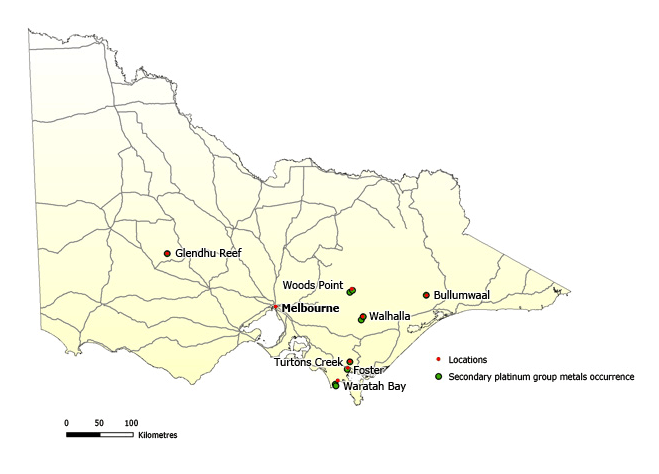Platinum group metals

The platinum group metals (PGM) provide fundamental inputs to several strategies for achieving sustainable development. They have applications in many areas, for example, emissions control and alternative energy sources.
Because they can be used to catalyse chemical and fuel-processing reactions, they can greatly reduce the financial and environmental costs of many industrial processes.
The PGM are platinum (Pt), palladium (Pd), rhodium (Rh), ruthenium (Ru), osmium (Os) and iridium (Ir). The six metals are generally found together, although their relative abundances may vary appreciably. In Victoria, PGM have been found in base metal sulphides associated with mafic dykes, and in secondary placer deposits.
The Thomson River copper mine, East Walhalla copper and platinum mine, Hunts gold mine and the New Loch Fyne gold mine are all associated with dykes of the Walhalla – Woods Point dyke swarm and all contain PGM, mainly platinum and palladium, as traces within base metal sulphides.
Traces of PGM associated with mafic dykes have also been reported from Bullumwaal and Glendhu.
Platinum and osmiridium (an alloy of osmium and iridium) have been found in alluvial gold deposits at Turtons Creek, Stockyard Creek and Waratah Bay, all close to Foster in south Gippsland. The source of the PGM in these deposits is uncertain.
Further information
Minerals of Victoria - Geological Survey of Victoria Report 92
Maps
To create your own maps online and in real time, plan exploration activities by viewing land status, or download GIS data to add to your own maps, visit GeoVic.

Page last updated: 12 Jan 2023